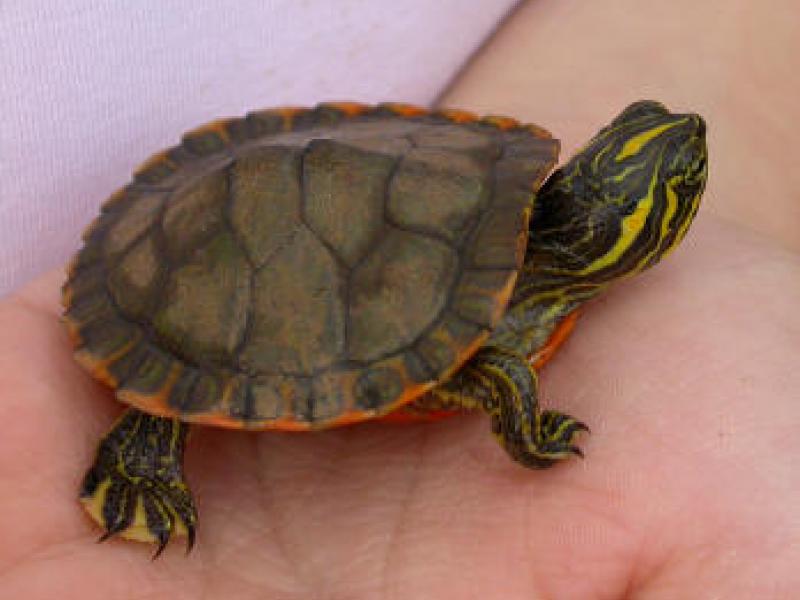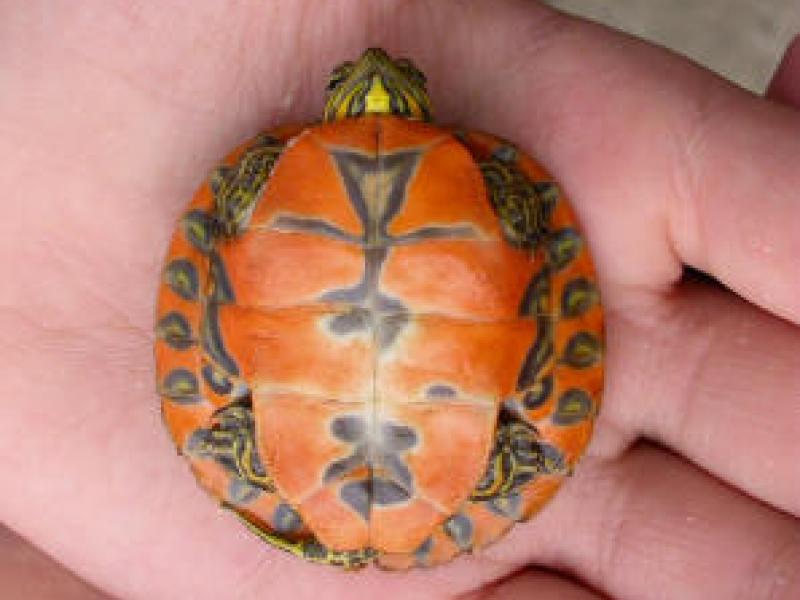Photo Credits: Bill Summerour - Weeks Bay Reserve Foundation
http://www.weeksbay.org
SCIENTIFIC NAME:
Pseudemys alabamensis
OTHER NAMES:
Red-bellied turtle, red-belly, cooter, slider
STATUS:
Endangered. Designated the official state reptile by the Alabama Legislature. Listed as endangered by the U.S. Fish and Wildlife Service. HIGHEST CONSERVATION CONCERN.
DESCRIPTION:
Approximately 1 foot in length. Females are slightly larger with a carapace (upper shell) length reaching 15 inches. Carapace color may be greenish to dark brown or black with yellowish, orangish, or reddish vertical markings along the sides. The plastron (under shell) may be pale yellow to red with or without dark markings. Colors or markings are usually more intense in young turtles. The head, neck, and legs are marked with yellowish striping. Males have elongated fore claws. A distinguishing characteristic is the prominent notch at the tip of the upper jaw, bordered on each side by a tooth-like cusp.
DISTRIBUTION:
Range is restricted to the Mobile-Tensaw River Delta in Mobile and Baldwin counties adjacent to Mobile Bay. Systematic sampling of major tributaries in coastal Alabama have shown them to be present in major rivers and tributaries of the Mobile Bay, Bayou La Batre, Fowl, Dog, Fish, Magnolia and Bon Secour rivers. Specimens have also been recorded from Daphne and Point Clear, Alabama.
HABITAT:
Found in shallow vegetated backwaters of freshwater streams, rivers, bays, and bayous in or adjacent to Mobile Bay. They seem to prefer habitats having soft bottoms and extensive beds of submergent aquatic macrophytes.
FEEDING HABITS:
Herbaceous (consume only vegetative matter), feeding on submergent aquatic macrophytes, such as hydrilla, brushy pondweed, eel-grass, arrowhead, and mud plantain.
LIFE HISTORY AND ECOLOGY:
Nest from April to early August with a peak in July. Female turtles leave their aquatic environment and lay their eggs on dry land. The nests are concentrated in openings or sparsely vegetated areas near levees, river banks or dredge spoil sites. A shallow nest is excavated in generally sandy soil where four to nine eggs are deposited. Young may emerge in fall (September to November) or over-winter until spring (March to April).
Fish crows and raccoons are the major nest predators, while alligators and humans are significant predators of the adult turtles. Many adult turtles bear tooth scars on their shells from alligator attacks. Additionally, fire ants have been observed in some nest chambers. Large fishes, snakes, wading birds, and mammals likely feed on the young as well.
The red-bellied turtle spends a great deal of time either foraging in vegetation or basking on logs. Quite wary while basking, they will quickly submerge when disturbed.
The Alabama red-bellied turtle is Alabama's state reptile.
REFERENCES:
Mirarchi, Ralph E., et al. , 2004. Alabama Wildlife Volume Three, Imperiled Amphibians, Reptiles, Birds, and Mammals. The University of Alabama Press, Tuscaloosa, AL., 225 pp.
Author:
James Masek, Wildlife Biologist, Division of Wildlife and Freshwater Fisheries.







